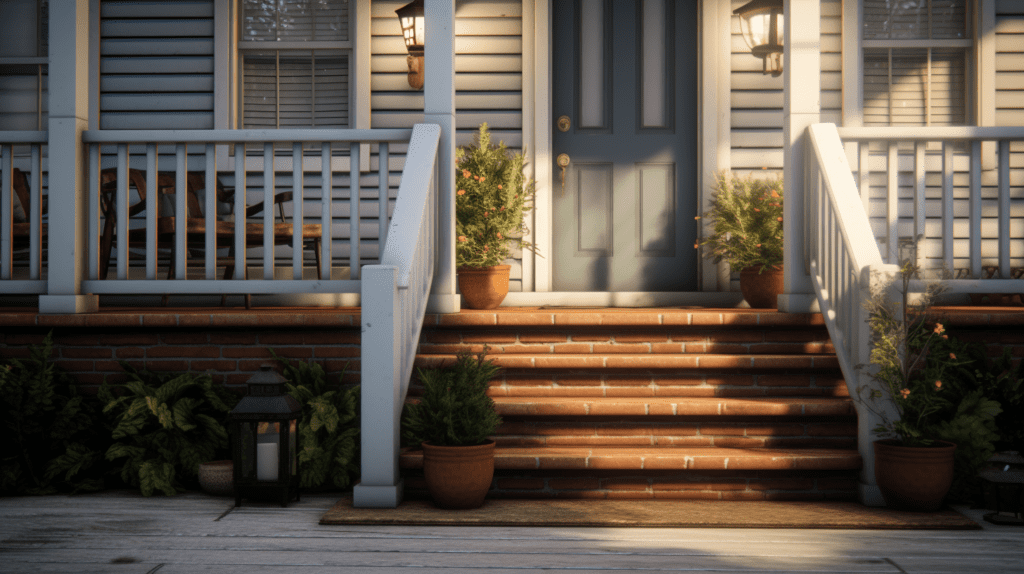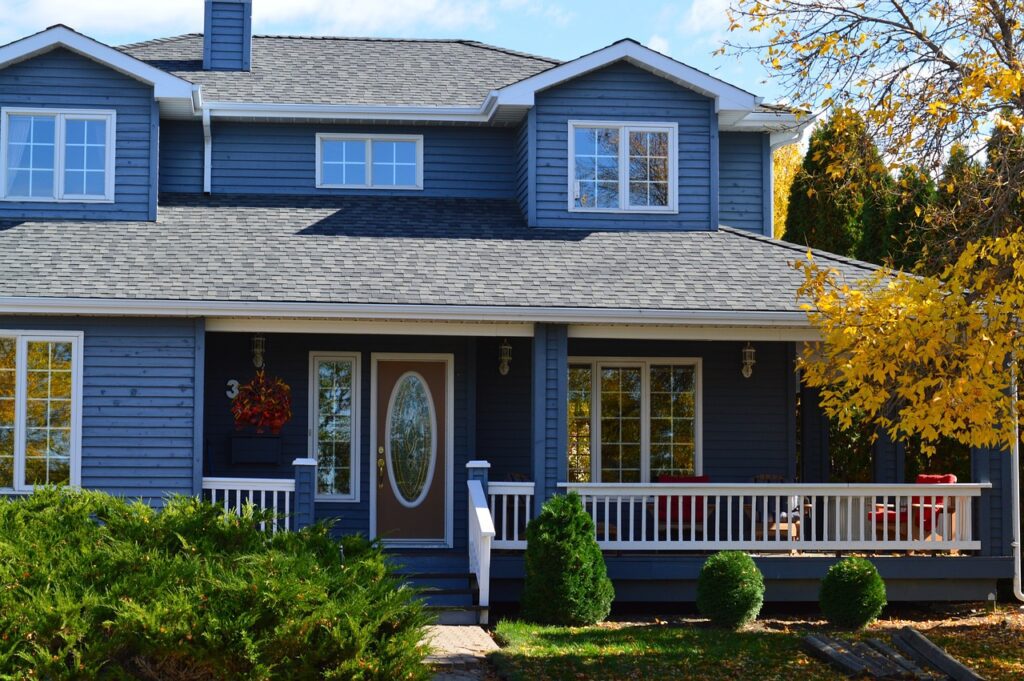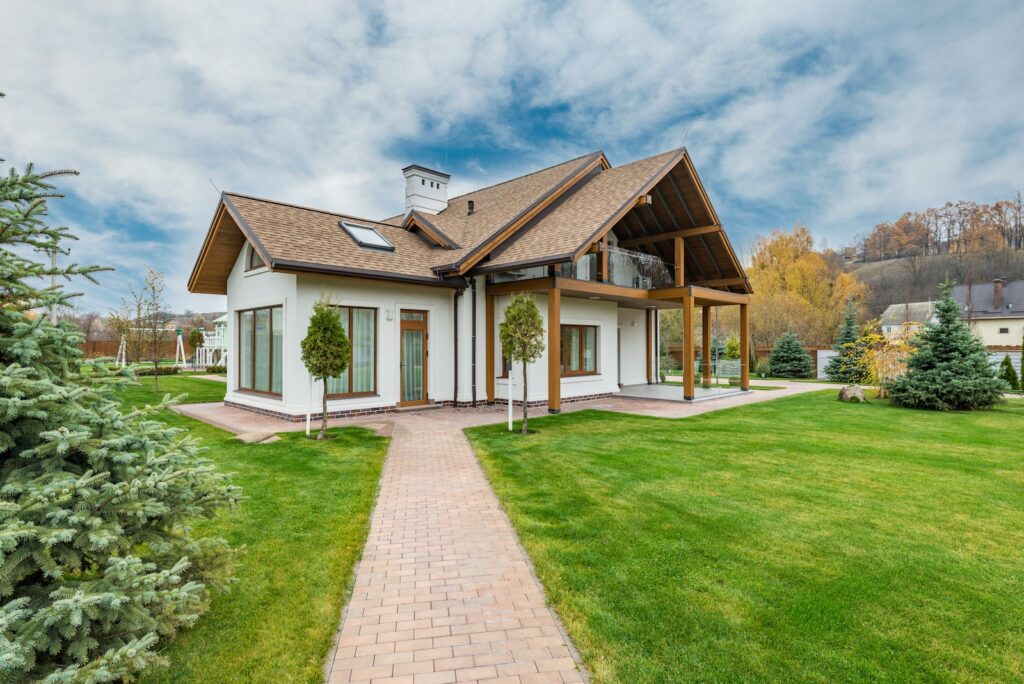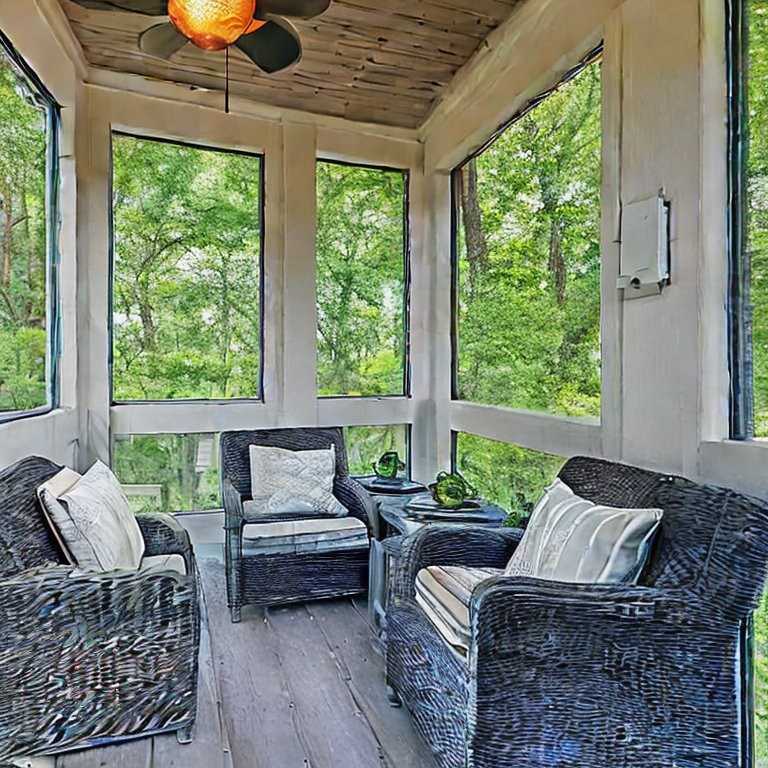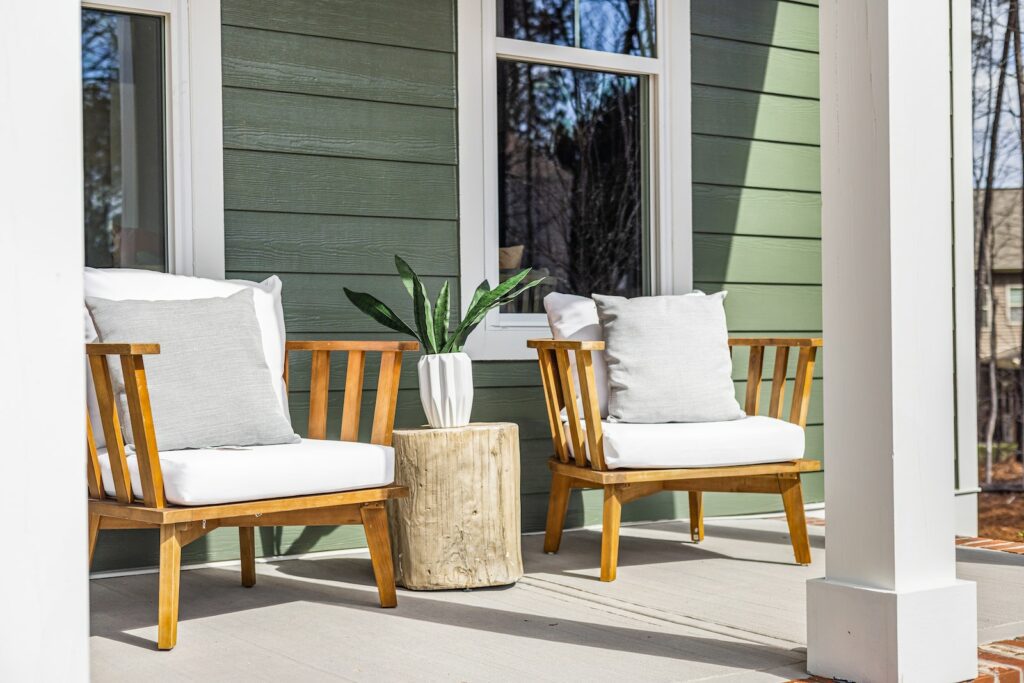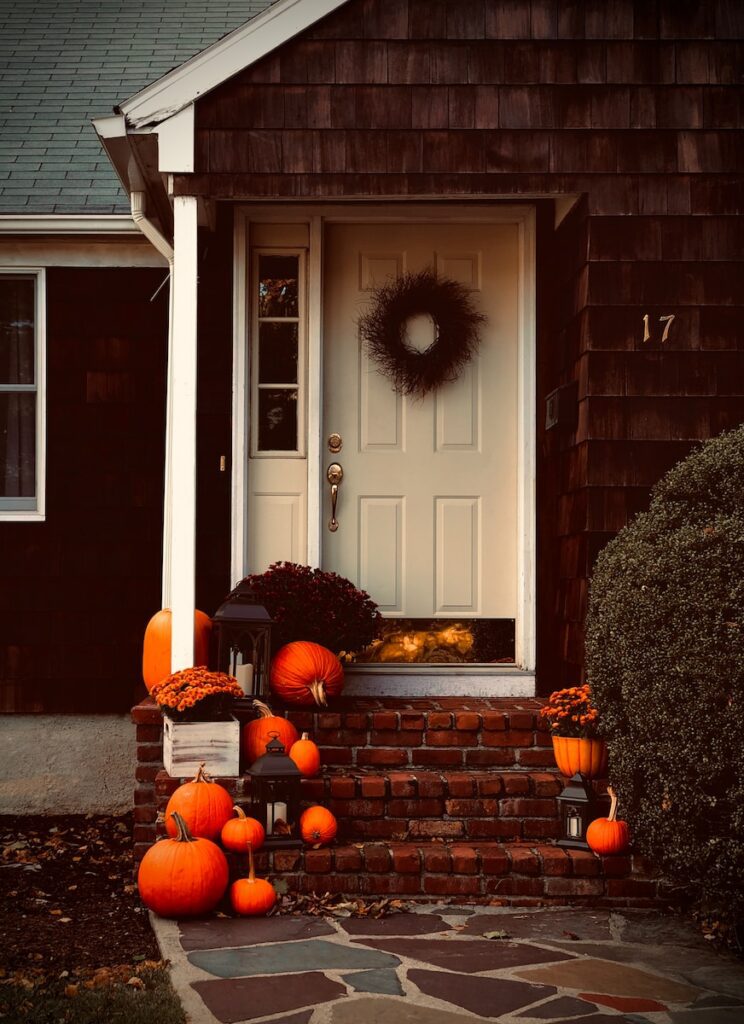Your porch is the gateway to your home, and the porch steps are the welcome mat that greets you and your guests. Building porch steps might seem like a straightforward task, but choosing the right materials can make a significant difference in both aesthetics and durability. In this guide, we’ll explore the five best materials for building porch steps that not only enhance your home’s curb appeal but also stand the test of time.
Wooden Porch Steps: Classic Elegance
Contents
Wooden porch steps are a timeless choice, adding classic elegance to your home’s entrance. They can be crafted from various wood types, with pressure-treated pine being a popular and cost-effective option. Cedar and redwood offer natural resistance to decay and insects, making them a durable choice. Wooden steps can be stained or painted to match your home’s exterior, allowing for a personalized touch.
One of the advantages of wooden steps is their versatility. They can be designed in various styles, from simple straight steps to more elaborate curved or spiral designs. Wooden steps also provide a comfortable and warm surface to walk on. However, they do require regular maintenance, including sealing, staining, or painting, to protect against weathering and rot.
Concrete Porch Steps: Durability Defined
For those seeking durability and versatility, concrete porch steps are an excellent option. They are incredibly resilient, capable of withstanding harsh weather conditions and heavy foot traffic without deteriorating. Concrete steps can be customized with various finishes, including stamped patterns and textured surfaces, providing a wide range of design possibilities.
Concrete porch steps offer long-term durability, making them a low-maintenance choice for homeowners. They are less susceptible to wear and tear compared to wood and require minimal upkeep. Additionally, concrete steps can be colored to match your home’s exterior, creating a cohesive and visually pleasing entrance.
Brick Porch Steps: Time-Tested Charm
Brick porch steps exude timeless charm and sophistication. They blend seamlessly with brick exteriors, creating a cohesive and visually appealing entrance. Brick steps are not only aesthetically pleasing but also highly durable, capable of enduring decades without losing their appeal. They require minimal maintenance, making them an attractive choice for homeowners.
Brick steps are particularly well-suited for traditional and colonial-style homes, adding a touch of classic elegance. The natural colors and texture of brick create a warm and inviting ambiance. While the initial cost of brick steps may be higher than some other materials, their longevity and timeless appeal make them a worthwhile investment.
Natural Stone Porch Steps: Rustic Elegance
For a touch of rustic elegance, natural stone porch steps are an excellent choice. Materials like flagstone, bluestone, or limestone can be used to create steps that are both rugged and beautiful. Natural stone steps offer exceptional durability and require little maintenance. Their unique patterns and textures add character to your porch, making it a standout feature of your home.
Natural stone steps are known for their timeless appeal and suitability for various architectural styles. They are often seen in country cottages, Mediterranean villas, and even modern homes, seamlessly blending with the surroundings. The irregular shapes and earthy colors of natural stone steps create an inviting and welcoming entrance.
Composite Porch Steps: Low Maintenance Luxury
Composite porch steps combine the best of both worlds: the look of wood with the durability of modern materials. Made from a blend of wood fibers and plastic, composite steps are resistant to rot, insects, and fading. They require minimal maintenance, typically needing only occasional cleaning. Composite steps come in various colors and styles, allowing you to achieve a wood-like appearance without the drawbacks of traditional wood.
Composite steps offer an array of design possibilities. You can find composite materials that mimic the appearance of various wood types, allowing you to match your porch steps to your home’s style. Additionally, composite steps are eco-friendly, as they often incorporate recycled materials in their composition.
Conclusion on Best Materials For Building A Porch Step
Building porch steps is not just about function; it’s an opportunity to enhance your home’s curb appeal and make a lasting impression. The choice of materials plays a pivotal role in achieving this goal. Whether you opt for the classic elegance of wooden steps, the durability of concrete, the timeless charm of brick, the rustic elegance of natural stone, or the low-maintenance luxury of composite, each material has its unique advantages. Consider your budget, style preferences, and maintenance expectations when making your decision, and you’ll have porch steps that welcome you home for years to come.
FAQs
Are wooden porch steps suitable for rainy climates?
While wooden porch steps can work in rainy climates, it’s essential to use pressure-treated or rot-resistant wood and apply a sealant to protect against moisture.
What is the average lifespan of concrete porch steps?
Properly maintained concrete porch steps can last for several decades, often 30 years or more.
Can I add handrails to my porch steps?
Yes, you can add handrails to enhance safety and aesthetics. They are especially important if your porch steps are elevated or have more than three risers.
Do brick porch steps require sealing or painting?
Brick steps do not typically require sealing or painting. However, you can apply a clear masonry sealer for added protection if desired.
What is the cost difference between natural stone and composite porch steps?
Natural stone steps are usually more expensive than composite steps due to the cost of the material and installation. Composite steps are a more budget-friendly option.
